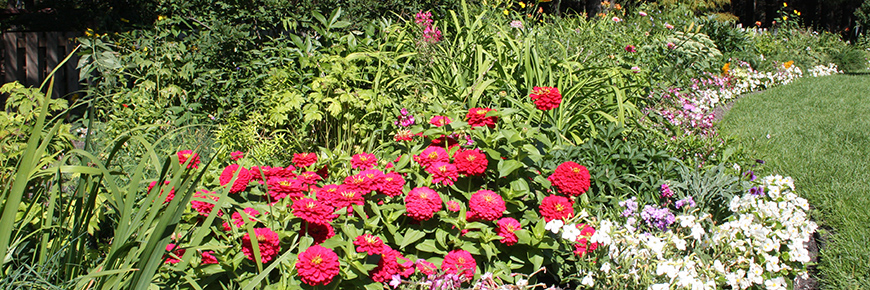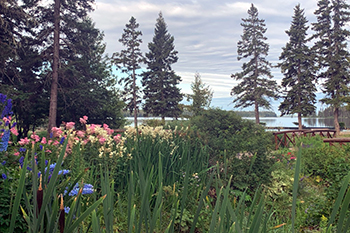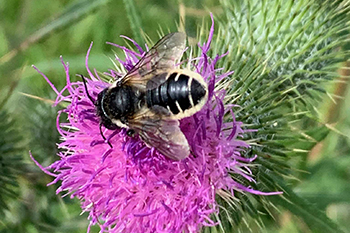
From the gardeners
Riding Mountain National Park

Parks Canada staff have been making some exciting changes to the gardens this year.
The gardening team recently did an inventory of native plants in our gardens. There are 88 species found in the gardens that are native to the park and surrounding area, 39 of those have been introduced in the last year. Native plants are often better able to withstand things like hail, intense wind, late frosts, etc. because they have evolved in exactly those kind of conditions. Many of our native plants are also incredibly beautiful. We wanted to make them accessible, so everyone can enjoy, learn, and be inspired by them. Many of these plants have been, and still are used by indigenous communities in the area. These plants should be respected and honoured. These native species are not only beautiful, but they are also medicines and food sources.
Part of the Parks Canada mandate is to protect, and this is not limited simply to large creatures like bears and elk but also smaller, invisible life forms. Beneficial microbes, mycorrhizal fungi, insects and spiders, are all important to the health of the garden. By making some changes, we can make things easier for these small beings as well.

Parks Canada staff makes sure to protect the soil. Soil is a lot like baking. If you don’t use good ingredients your product won’t be successful. We try to feed, cover, and care for the soil. We are always amending the soil with various kinds of organic matter. We do this to enrich and feed the microbes and fungi that live there. Many plants rely heavily on these small life forms! We do not plow or use tillers as this disturbs the soil structure. Instead, we are trying to be gentle with the land, and trying to nourish it. Adding organic matter and covering the soil with mulch provides an ideal environment for plant roots and beneficial fungi to come together. We want strong, healthy plants. The best way to achieve that is with strong, healthy soil.
We always make sure to honour the water. Whenever a decision is made, the amount of water needed is always considered. Some plants have higher water needs than others. We know that some beds will require more than others. Using water wisely is a priority. We don’t put sprinklers on in the afternoon as too much water is lost to evaporation. We avoid using plants that are easily drought stressed.

We have also mulched nearly every bed in the park. Mulch is basically any organic material that is used to cover and protect the soil. Some people use bark nuggets or straw as a mulch in their vegetable gardens. We use the wood chips of dead trees. Mulch helps to keep the soil cool, moist and protected from drying out. It also significantly reduces the amount of weeding that we have to do. Eventually, over time, the mulch will break down and feed the soil. It creates a “micro habitat” for insects and other small invertebrates. This creates foraging opportunities for songbirds such as warblers, thrushes, and chickadees. Mulch also helps prevent disease by stopping soil from splashing onto leaves during a rainstorm. By mulching all of our beds, we have reduced our water usage by as much as 30%. Staff also spends less time weeding and more time for planting, deadheading, and planning.
The gardens are becoming friendlier for birds, pollinators and life forms in the soil. We are looking forward to watching these gardens grow.
- Date modified :